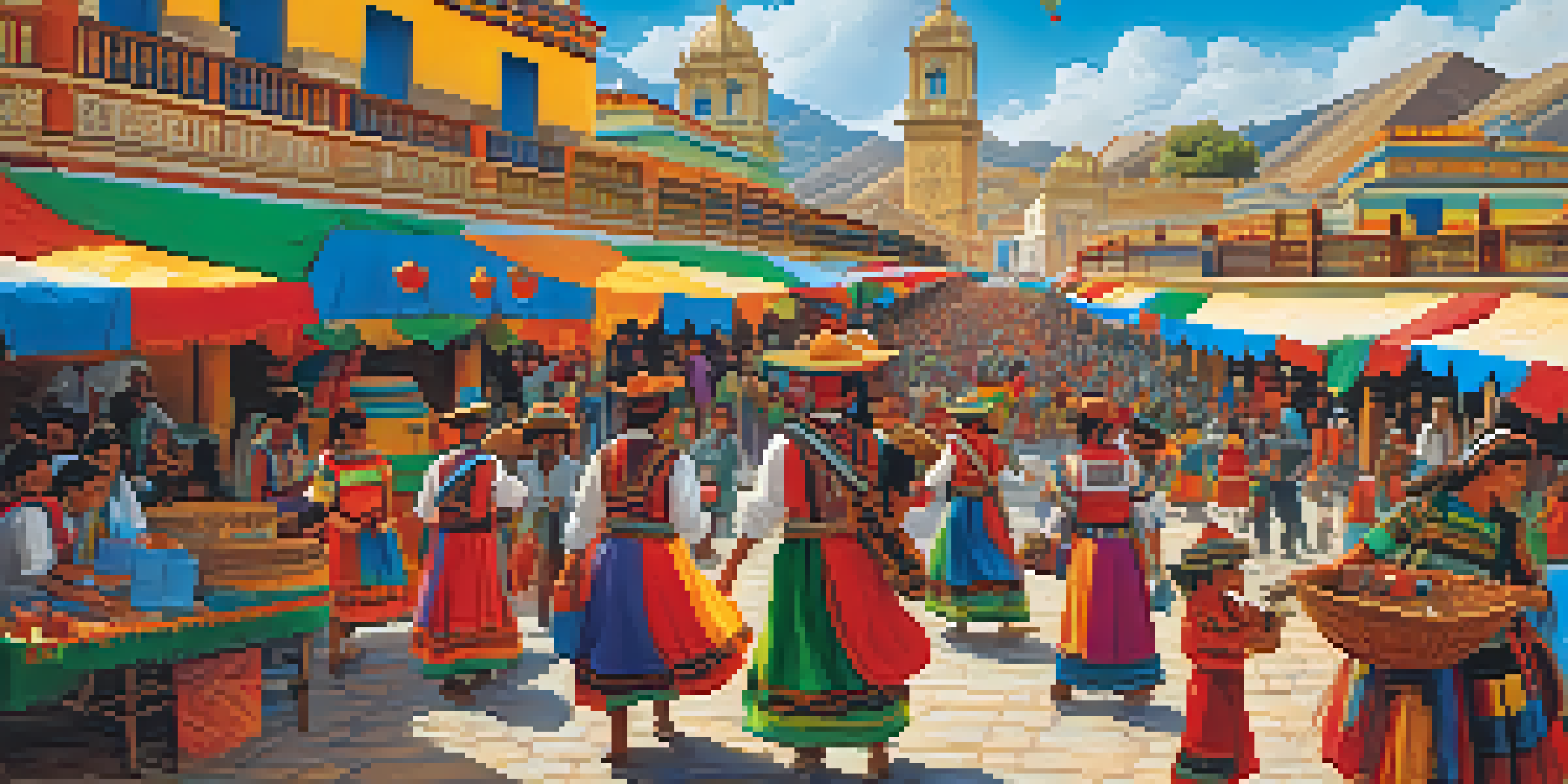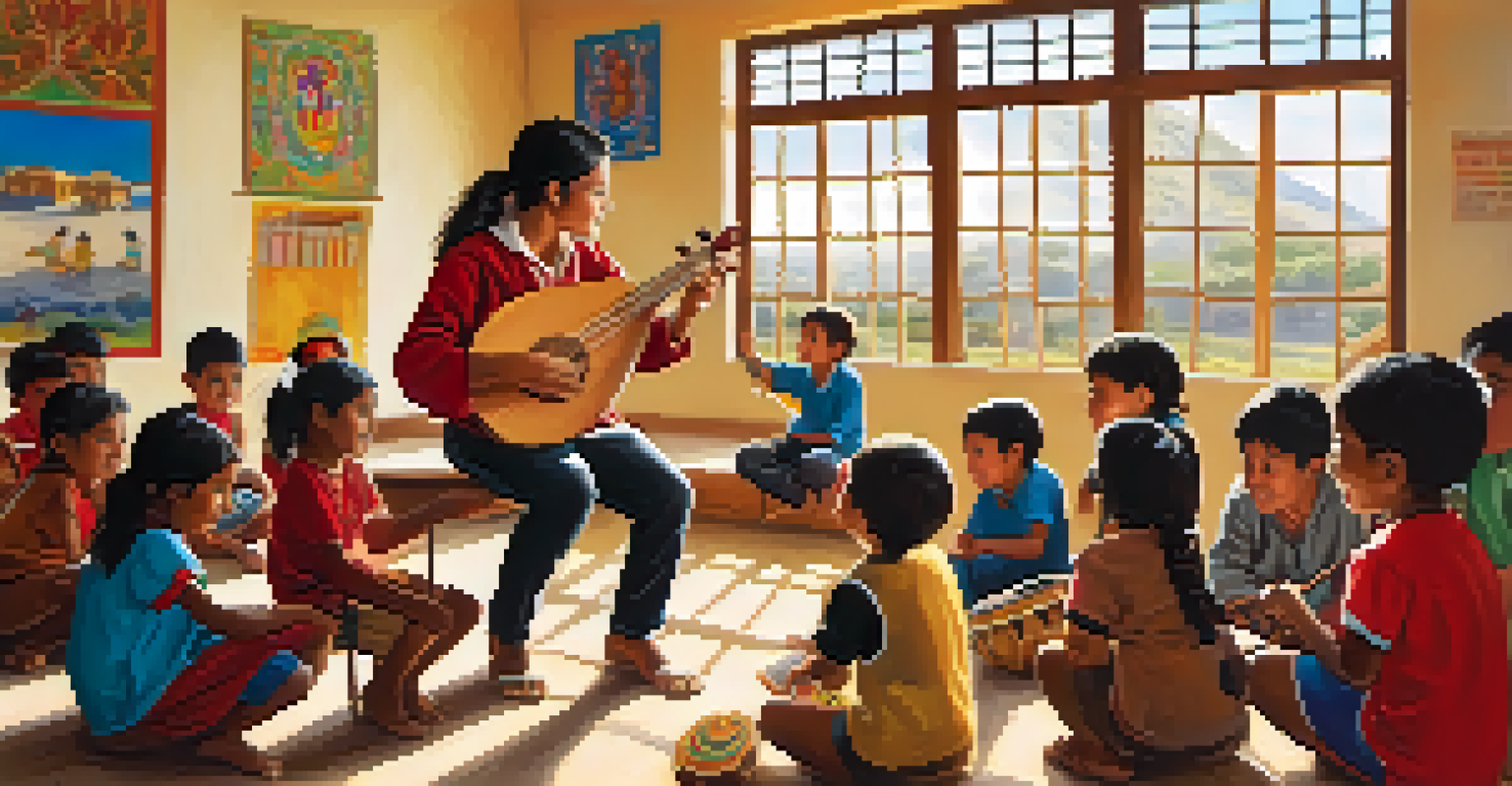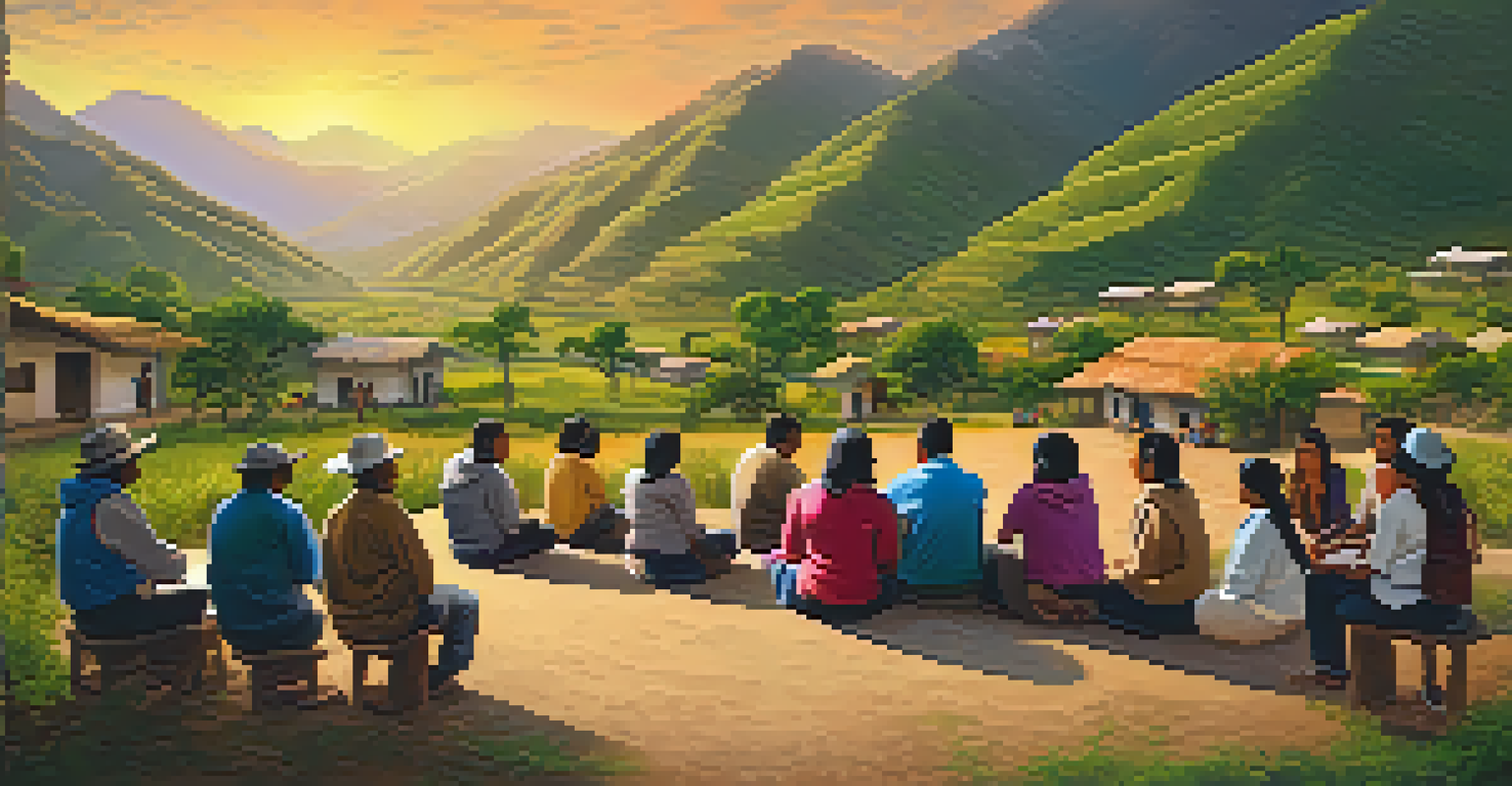The Impact of Cultural Volunteering on Peruvian Communities

Understanding Cultural Volunteering in Peru
Cultural volunteering involves individuals offering their skills and time to support cultural initiatives. In Peru, this often means engaging with local communities to promote arts, heritage, and education. Volunteers play a crucial role in preserving the rich cultural tapestry of Peru, which includes indigenous traditions and contemporary arts.
Volunteering allows you to connect your passion with a purpose.
By participating in cultural programs, volunteers help foster a sense of community and belonging. This shared experience not only enriches the volunteers but also enables locals to express their identity and culture. Ultimately, cultural volunteering acts as a bridge, connecting diverse backgrounds and fostering mutual respect.
Moreover, cultural volunteering can significantly impact local economies. When volunteers engage with communities, they often help to create sustainable practices that benefit both the local population and the broader cultural landscape. This synergy is essential for the preservation of Peru's cultural heritage.
Enhancing Local Education Through Volunteer Efforts
One of the most direct impacts of cultural volunteering in Peru is in the field of education. Volunteers often assist in teaching art, music, and language, providing resources that local schools might lack. This educational support empowers students, inspiring them to embrace their cultural heritage and pursue their passions.

For example, a volunteer musician might work with local children to teach them traditional Peruvian instruments. Such initiatives not only preserve musical traditions but also build confidence and teamwork among participants. The ripple effect of this educational approach fosters a deeper appreciation for cultural roots.
Cultural Volunteering Enriches Communities
Volunteers enhance local culture and education, fostering community bonds and preserving heritage.
Additionally, volunteers often help develop educational materials that incorporate local culture into the curriculum. This makes learning more relevant and engaging for students. By emphasizing cultural pride, volunteers encourage the next generation to value and uphold their heritage.
Promoting Cultural Exchange and Understanding
Cultural volunteering in Peru also facilitates a rich exchange of ideas and traditions. Volunteers bring diverse perspectives and skills, which can inspire local artists and community leaders. This interaction enriches the cultural landscape as new ideas blend with traditional practices.
The best way to find yourself is to lose yourself in the service of others.
For instance, a volunteer artist might collaborate with local artisans to create innovative works that incorporate both contemporary and indigenous techniques. This fusion not only attracts tourism but also creates a vibrant artistic community that honors its roots while embracing change. Such collaborations can help redefine cultural expressions.
Furthermore, cultural exchange fosters understanding and dialogue among people of different backgrounds. By working together, volunteers and locals build lasting relationships that transcend cultural barriers, promoting a more inclusive society. This mutual respect nurtures a community spirit that is vital for social cohesion.
Strengthening Community Bonds Through Shared Experiences
Cultural volunteering creates opportunities for community members to come together and collaborate on projects. These shared experiences foster friendships and strengthen community ties. When locals and volunteers work side by side, they build trust and a sense of belonging.
For example, organizing cultural festivals can bring together diverse groups to celebrate heritage and creativity. These events not only highlight local talent but also encourage community participation. The excitement generated by collective efforts often leads to more initiatives and sustained engagement.
Economic Benefits of Cultural Efforts
Cultural volunteering promotes local arts and crafts, leading to economic empowerment and sustainability.
Moreover, the bonds formed during these projects can lead to increased civic responsibility. Volunteers often inspire locals to take an active role in their communities, driving positive change. This cycle of involvement enhances social capital and reinforces the importance of community collaboration.
Contributing to Economic Development and Sustainability
Cultural volunteering can have a significant impact on the economic development of Peruvian communities. By promoting local arts and crafts, volunteers help create markets that support artisans and small businesses. This economic boost can empower communities and reduce poverty.
For instance, a volunteer project that trains locals in sustainable tourism can lead to job creation and business opportunities. As communities learn to harness their cultural assets, they can attract visitors seeking authentic experiences. This not only generates income but also encourages the preservation of cultural practices.
Additionally, cultural volunteering often leads to the creation of non-profit organizations dedicated to maintaining cultural heritage. These organizations can secure funding and resources to continue supporting local projects. As a result, the economic benefits of cultural volunteering extend beyond immediate impact, fostering long-term sustainability.
The Role of Technology in Cultural Volunteering
In today's digital age, technology plays a pivotal role in enhancing cultural volunteering efforts. Volunteers can use social media and online platforms to share their experiences and connect with others interested in supporting local communities. This increased visibility can attract more volunteers and resources.
For example, a volunteer might document their work in a local community and share it online, inspiring others to get involved. These stories can showcase the diverse cultural landscape of Peru and highlight the positive outcomes of volunteer efforts. In turn, this fosters a global community of advocates for cultural preservation.
Technology Enhances Volunteer Impact
Digital tools facilitate connections and project organization, broadening the reach of cultural volunteering.
Moreover, technology can help streamline the organization of projects, making it easier for volunteers to collaborate with locals. Online tools can facilitate communication, planning, and resource sharing. By leveraging technology, cultural volunteering can become more effective and far-reaching.
Challenges and Opportunities in Cultural Volunteering
While cultural volunteering offers numerous benefits, it also comes with challenges. One significant hurdle is ensuring that volunteer efforts align with the needs and desires of local communities. It’s vital for volunteers to engage in open dialogue with locals to understand their perspectives.
For instance, a well-meaning volunteer might introduce an idea that doesn't resonate with the community. This can lead to misunderstandings and a lack of engagement. Therefore, taking the time to listen and adapt is crucial for successful cultural initiatives.

However, overcoming these challenges can lead to rich opportunities for growth and learning. When volunteers and communities collaborate effectively, they can create innovative solutions that address local issues. This synergy not only enriches both parties but also amplifies the positive impact of cultural volunteering.